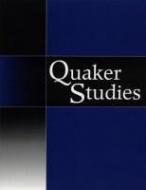
Abstract
This article is a revised and elaborated version of The George Richardson Lecture of 1998. It gives an account of the young men who were members of or affiliated with the Norwegian Religious Society of Friends who refused to serve in the military in the nineteenth century. The article starts with the dramatic story ofS0ren Olsen who refused to do naval service in 1848 and was sentenced to suffer 27 lashes a day for three days with the ninetailed cat. His case went to the Supreme Court and even to the King before it was finally settled. He kept a journal of his experiences and thoughts during his ordeal, a unique testimony in the history of conscientious objection. The Dissenter Law of1845 allowed churches outside the Lutheran State Church to establish in Norway, but it did not allow conscientious objection. After general conscription was implemented in the 1850s other young men followed S0ren Olsen in refusing military service, and the article analyses their suffering and the response of Norwegian and British Quakers and their efforts to influence the authorities to make provisions for conscientious objectors (COs). During the last quarter of the century several young male Quakers emigrated to the USA to escape military service, and the very existence of the No1wegian Quaker Society was threatened. The peace organisations and members of the Norwegian Parliament used the fact that young men had to emigrate to practise their faith as a strong argument in their lobbying for a law allowing conscientious objection. The refusal on the part of the YM clerk to provide the authorities with lists of young men liable for conscription resulted in the loss of the Society's status as a registered church. It seemed impossible to practise the Quaker faith under these circumstances. Conscientious objection was up to that time a Quaker issue, but around 1900 young men outside the Quaker Society were also recorded as conscientious objectors. In 1902 some provisions for conscientious objectors were granted, and in 1922 a law permitting alternative civil service was passed. In 1936 NYM was again registered as a church. The article evaluates the efforts of the Quakers in Norway and Britain on behalf of the conscientious objectors and the impact their refusal had in the struggle for religious freedom and human rights in Norway.
Recommended Citation
Aarek, Hans Eirik
(2007)
"Conscription and Conscientious Objection in the Experience of Norwegian Friends,"
Quaker Studies: Vol. 11:
Iss.
1, Article 2.
Available at:
https://digitalcommons.georgefox.edu/quakerstudies/vol11/iss1/2
